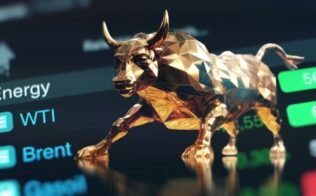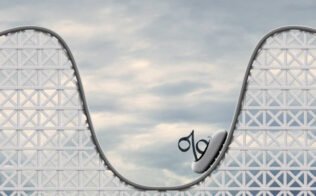The Sensex is the stock market index of the Bombay Stock Exchange (BSE) in India. This index was first introduced on January 1, 1986, as a basket of 30 equities reflecting the country’s largest and most financially sound corporations listed on the Bombay Stock Exchange (BSE).
Deepak Mohini, a stock market analyst, invented the name Sensex, which is a combination of the phrases ‘Sensitive’ and ‘Index.’ The changes in the Sensex reflect the movements of the Indian stock market. Sensex is widely regarded as the Indian stock market’s benchmark index. The Bombay Stock Exchange is also the oldest index in India and has provided time series data since 1979. When the bellwether index is released, it represents the attitude of the marketplace and acts as a standard against which fund managers may monitor the effectiveness of their respective funds. For investors, Sensex serves as a barometer for the performance of the Indian stock markets.
In layman’s words, an increase in the value of the Sensex indicates that there has been an increase in the overall price of stocks. On the other side, the Sensex value falls, indicating that there has been a broad downturn in the value of stocks. Since Sensex includes firms from all major sectors of the economy, it is a true reflection of the sentiment of the Indian stock market.
Read More: How to Become a Successful Trader?
History of Sensex
The Sensex is primarily a stock market index that tracks the performance of the Bombay Stock Exchange (BSE). The stock exchange, founded in 1875, did not provide an official index until January 1, 1986, when the Sensex index was introduced to measure the progress of the Indian markets in general. The Nifty is another key indicator in India since it is the barometer of the National Stock Exchange (NSE), which is the Nifty. The Sensex index comprises 30 important stocks drawn from all major industries and traded on the stock exchange regularly. As a result, the Sensex is an accurate reflection of the activity of the Indian stock markets.
How to Trade on BSE Sensex?
To trade on the BSE Sensex, investors must have a Demat Account and a trading platform. The shares are kept in electronic form on a Demat account. The securities are deducted or credited according to the transaction as a bank account.
The buying and selling of stocks over the internet are made easier using a trading account. Investors must use a broker or brokerage platform registered with the SEC to trade on the stock market. When it comes to trading, brokers serve as financial mediators between the stock market and individual investors. To trade on the BSE Sensex, an investor needs a bank account and a PAN card in addition to a trading and Demat account.
Read More: What Is Nifty and How It Is Calculated?
What is the Formula for Calculating the Sensex?
When the Sensex, also known as the BSE 30, when first created, it was calculated using the Market Capitalization, or “Full Market Capitalization,” but from September 1, 2003, it was calculated using the “Free-float Market Capitalization” approach.
The Sensex index is produced by taking into account the stock values of 30 different firms listed on the BSE. This figure is determined according to the “free-float market capitalization” technique. This is considered one of the most accurate techniques for computing a stock market index. In previous years, the Sensex would be determined to use the weighted market cap technique, which is still in use today. However, as of September 1, 2003, the unrestricted market capitalization approach is being utilized to calculate the value of a company’s stock. A new list of the top 30 corporations is created each year, and the list is updated on a regular basis. This is done to ensure that Sensex is a reliable indicator.
This strategy is utilized by all significant index producers, including MSCI and FTSE and several smaller companies. The free float of a business’s stock is defined as the proportion of all shares granted by the company that is easily accessible for trading by the general public on an exchange. This calculation does not include promoter holdings, government holdings, and other stocks that would not be accessible for trade on the stock market in the normal course of events.
Free-Float Market Capitalization is equal to the sum of the market capitalization and the free-float factor.
Consider the following scenario: The firm owns 100 shares of stock in the company. 70 of these 100 properties are open to the general public, while the federal government holds the remaining 30. This indicates that 70 per cent of the shares are ‘free-floating,’ and the free-float market factor will be 70 per cent as a result. The valuation of a corporation is represented by the term “market capitalization.” It may be calculated by multiplying the increasing price of the share by the number of shares issued in the first place.
The Sensex is determined by following the 4 processes outlined below:
1. First, it is necessary to calculate the market capitalizations of each of the 30 firms that make up this index by multiplying the price of the stocks by the number of shares allotted by that particular company.
2. The market valuation is then multiplied by the free-float factor to arrive at the free-float market capitalization, which is the sum of all the market capitalizations. (The free-float factor of a firm is the factor by which the corporation’s entire market capitalization is multiplied to get at the free-float market capitalization of that company.
3. It is established by the BSE depending on the data available by the firms in their submissions. The free-float factor has a value between 0.05 and 1.00, which is a positive number. A free-float ratio of 0.55, for example, indicates that only 55 per cent of the company’s market capitalization will be taken into account for calculating the index.)
4. The Index Divisor is a figure calculated by dividing the free-float capitalization of the Index members by a value known as the Index Divisor. This index divisor is the only link between the index’s current value and the index’s original base period value. (In the case of the Sensex, the foundation value period is 1978-1979.) This value allows for evaluating the index for more than a period to be performed.
Read More: How to Predict the Stock Market?
How these 30 Corporations are Chosen?
The following are the criteria used by the BSE in choosing these companies:
Stock listed on the BSE: The stock must have been listed on the BSE for at least one year to be considered.
Market Capitalization: The firm should be among the top 100 publicly traded corporations in terms of total market capitalization. The security really should be traded on any and every market day for the previous year, according to the Bombay Stock Exchange (BSE). Exceptions to this rule can only be allowed in the direst circumstances.
Trading Volume and Turnover on a Daily Basis: The securities should be among the top 150 companies in terms of the average number of stocks per day and the average value of the stock traded per day over the last year.
In the judgement of the Index Committee, the business should have an appropriate track record, according to information on the BSE website. The Index Committee should meet once a quarter to examine all BSE indexes, including the SENSEX, and make recommendations. On the other hand, every review meeting may or may not result in a change in the constituency.
Read More: What is Trading with Leverage?
Sensex’s Performance Over the Last Decades
Over the period 1986 to 2021, the Sensex has expanded at a compounded annual rate of almost 14 per cent every year. This expansion represents the significant development of the Indian economy over that period, especially the rise of the middle class in that country. The Sensex fell by about 40% in March 2020, during the height of the coronavirus health crisis, but rebounded substantially throughout the rest of the calendar year. By February 2020, the Sensex had risen to an all-time high, surpassing its previous record.
Learn more about Stock Market
If you are a beginner and want to learn more about the stock market, you can join us at The Thought Tree. We provide the best stock market course in Jaipur. We offer our students personal mentorship and live trading practice so that they learn how to face the real market and earn handsome income.
Recent blog
Course
- Unlocking the Mysteries of Bull Markets: A Comprehensive Guide
- Understanding Blue Chip Stocks: Definition, Examples, and Investment Strategies
- Understanding Volatility: What Is Volatility in the Stock Market?
- What is SEBI: Role, Structure, and Powers
- Understanding Bear Market: Types, Causes, and Consequences





